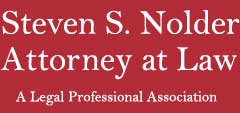SUPREMES SPLIT ON STRAW PURCHASER LIABILITY
In what can only be described as a shocking alignment of justices voting for affirmance of a criminal conviction and those voting for vacation, today, the Supreme Court clarified when a statement is “material” on ATF Form 4473, which must be filled out when a firearm is purchased. Bruce Abramski, a former police officer, appeared at a firearms dealer to purchase a gun—the problem was the true buyer was his uncle. Both Abramski and his uncle were able to buy the gun but this task was completed by Abramski because he could get a better deal on the weapon by using his old police ID. Abramski’s role in this transaction was hardly hidden as his uncle mailed Abramski a check to reimburse him for the gun and wrote “Glock 19 handgun” on the memo line.
Question 11a on the Form 4473 asks the purchaser—”are you the actual transferee/buyer of the firearm(s) listed on this form? Warning: You are not the actual buyer if you are acquiring the firearm(s) on behalf of another person. If you are not the actual buyer, the dealer cannot transfer the firearm(s) to you.” Abramski represented that he was the purchaser/transferee and was charged with violating 18 U.S.C. §§922(a)(6) and 924(a)(1)(A). Abramski moved to dismiss the charges arguing that a response to Question 11a could never be “material.” As a sub-argument, Abramski, maintained that his response was not “material” because his uncle was eligible to buy the gun himself (the NRA and 26 states supported this interpretation). Abramaski was convicted and the Fourth Circuit affirmed.
There was a split in the circuits on this question and the Supreme Court took the case to resolve the split. To state the obvious, the liberal band of the Court (Kagan, Ginsburg, Sotomayor, and Breyer) are ones who are more likely to vote to vacate criminal convictions whereas the conservative band (Scalia, Roberts, Thomas, and Alito) are more likely to vote to affirm. The “swing” justice, Kennedy, is the vote each group covets, and frequently, cultivates. The Supreme Court’s Abramski decision shows the impact that gun politics plays on the Court.
The conservative wing voted to reverse Abramski’s conviction whereas the liberal bloc voted to affirm; but the liberals took home the prize by attracting Kennedy to their camp. The holding of the Court is stated both broadly and narrowly. First the broad—the majority held that a response to Question 11a is always material to a gun sale’s legality. Finally, the narrow–a false response to Question 11a is punishable under §§922(a)(6) and 924(a)(1)(A) even when the true purchaser could buy the gun.
RECENT POSTS
categories
- Uncategorized
- child pornography
- Drug Offenses
- Scott & Nolder Review
- DUI
- Domestic Violence
- Criminal Defense
- reckless harm
- Criminal Charges
- Gun Control
- Sentencing
- OVI
- National Sex Offender Registry
- SENTENCING DATA
- Capital Punishment
- Illegal Reentry
- Court Behavior
- Sex Offenders
- Order of Protection
- Mortgage Fraud
- Technology
- Fraud Charge
- DNA
- Military Service
- Federal Law
- Infographic
- Jail Population
- Federal Bureau of Prisons
- Sentencing Reform
- Term of Supervised Release
- Attorney Behavior
- Reduced Drug Sentences
- Judicial Behavior
- Supervised Release
- Federal Parole
- ethics
- Legalizing Marijuana
- Attorney
- LEGAL EDUCATION
- Alcohol
- Vagueness
- Bail
- Traffic Ticket
- Manslaughter
- Gun
- Assault
- Scott & Nolder Law Firm
- Criminal Lawyer Reviews
- Consent Laws
- Internet Sex Crimes
- Bonds
- Tax Crimes
- Miranda Warning
Archives
2023
2019
2018
2016
2015
- December (7)
- November (11)
- October (2)
- September (3)
- August (9)
- July (13)
- June (8)
- May (15)
- April (10)
- March (14)
- February (1)
- January (6)
2014
- December (7)
- November (9)
- October (9)
- September (4)
- August (2)
- July (11)
- June (5)
- May (6)
- March (3)
- February (2)
- January (6)

